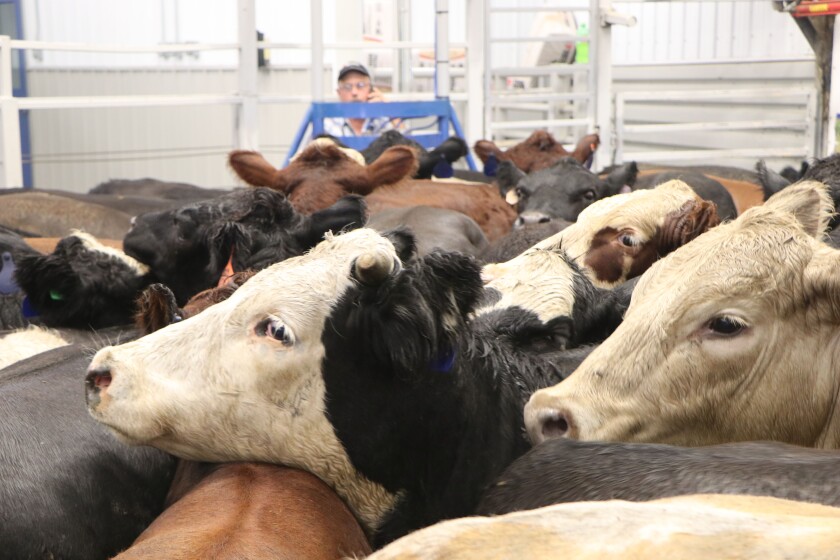Elevate Your Knowledge with Bagley Risk Management
Elevate Your Knowledge with Bagley Risk Management
Blog Article
Recognizing Livestock Risk Defense (LRP) Insurance Coverage: A Comprehensive Guide
Navigating the world of animals threat security (LRP) insurance policy can be a complicated endeavor for numerous in the agricultural industry. This kind of insurance coverage supplies a safety and security net against market changes and unpredicted circumstances that could impact livestock producers. By comprehending the complexities of LRP insurance coverage, manufacturers can make enlightened decisions that might guard their operations from economic risks. From exactly how LRP insurance policy operates to the various coverage choices readily available, there is much to discover in this thorough guide that might possibly form the means livestock producers approach threat monitoring in their organizations.

How LRP Insurance Policy Works
Sometimes, comprehending the auto mechanics of Animals Threat Security (LRP) insurance can be intricate, yet damaging down just how it works can supply clearness for farmers and ranchers. LRP insurance coverage is a threat management device developed to protect livestock manufacturers versus unexpected rate decreases. The plan enables manufacturers to set an insurance coverage level based on their details needs, selecting the number of head, weight range, and protection price. Once the policy is in place, if market value drop listed below the protection price, manufacturers can file an insurance claim for the distinction. It's vital to keep in mind that LRP insurance coverage is not an earnings warranty; instead, it concentrates exclusively on cost threat protection. The protection duration typically ranges from 13 to 52 weeks, giving adaptability for producers to choose a duration that straightens with their production cycle. By utilizing LRP insurance policy, farmers and herdsmans can alleviate the economic threats associated with fluctuating market prices, guaranteeing greater stability in their procedures.
Eligibility and Coverage Options

When it involves protection options, LRP insurance provides manufacturers the flexibility to select the insurance coverage degree, protection duration, and recommendations that best fit their threat management demands. Protection degrees generally range from 70% to 100% of the anticipated finishing value of the insured animals. Producers can additionally pick protection periods that align with their production cycle, whether they are insuring feeder livestock, fed livestock, swine, or lamb. Recommendations such as price threat defense can even more tailor insurance coverage to safeguard versus damaging market variations. By comprehending the qualification criteria and insurance coverage choices available, livestock manufacturers can make informed choices to handle risk properly.
Advantages And Disadvantages of LRP Insurance Coverage
When evaluating Animals Danger Protection (LRP) insurance, it is necessary for animals producers to weigh the advantages and negative aspects intrinsic in this risk administration tool.

One of the main advantages of LRP insurance coverage is its capacity to offer security against a decline in animals prices. In addition, LRP insurance supplies a level of adaptability, allowing producers to tailor insurance coverage degrees and plan durations to match their details needs.
One restriction of LRP insurance policy is that it does not shield versus all types of threats, such as condition outbreaks or natural calamities. It is critical for manufacturers to meticulously assess their individual threat exposure and financial scenario to identify if LRP insurance is the appropriate threat administration device for their operation.
Recognizing LRP Insurance Policy Premiums

Tips for Optimizing LRP Advantages
Taking full advantage of the benefits of Livestock Danger Protection (LRP) insurance policy calls for critical preparation and aggressive risk management - Bagley Risk Management. To take advantage of your LRP protection, think about the complying with tips:
Regularly Evaluate Market Conditions: Stay educated concerning market trends and rate changes in the livestock market. By keeping an eye on these variables, you can make informed choices go to website concerning when to purchase LRP protection why not check here to shield against prospective losses.
Set Realistic Protection Degrees: When choosing coverage degrees, consider your manufacturing prices, market price of livestock, and potential threats - Bagley Risk Management. Setting sensible protection levels ensures that you are effectively shielded without overpaying for unnecessary insurance policy
Expand Your Insurance Coverage: Instead of counting solely on LRP insurance policy, think about expanding your risk management techniques. Incorporating LRP with other threat administration devices such as futures agreements or alternatives can provide detailed coverage against market unpredictabilities.
Review and Change Protection Regularly: As market problems change, occasionally examine your LRP protection to ensure it aligns with your current risk direct exposure. Changing coverage levels and timing of purchases can help enhance your risk defense method. By complying with these tips, you can make best use of the benefits of LRP insurance policy and safeguard your livestock operation against unpredicted risks.
Final Thought
Finally, livestock risk protection (LRP) insurance policy is a valuable device for farmers to manage the economic threats related to their animals procedures. By understanding how LRP functions, eligibility and protection options, along with the benefits and drawbacks of this insurance, farmers can make enlightened decisions to protect their resources. By very carefully taking into consideration LRP premiums and executing techniques to optimize advantages, farmers can minimize potential losses and make sure the sustainability of their procedures.
Livestock manufacturers interested in acquiring Livestock Danger Defense (LRP) insurance can explore a range of qualification criteria and protection alternatives tailored to their certain livestock procedures.When it comes to protection choices, LRP insurance policy offers manufacturers the adaptability to choose the insurance coverage degree, protection period, and endorsements that best fit their threat administration requirements.To understand the ins and outs of Livestock Danger Protection (LRP) insurance coverage completely, recognizing the aspects affecting LRP insurance policy costs is vital. LRP insurance costs are established by different components, including the coverage degree selected, the expected price of animals at the end of the insurance coverage period, the type of livestock being guaranteed, and the length of the coverage period.Evaluation and Adjust Protection Regularly: As market problems change, occasionally examine your LRP protection look at these guys to guarantee it lines up with your existing risk direct exposure.
Report this page